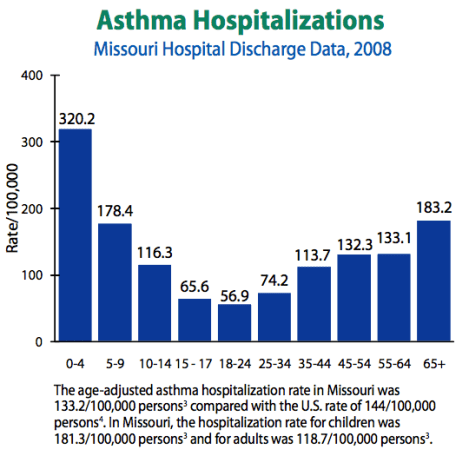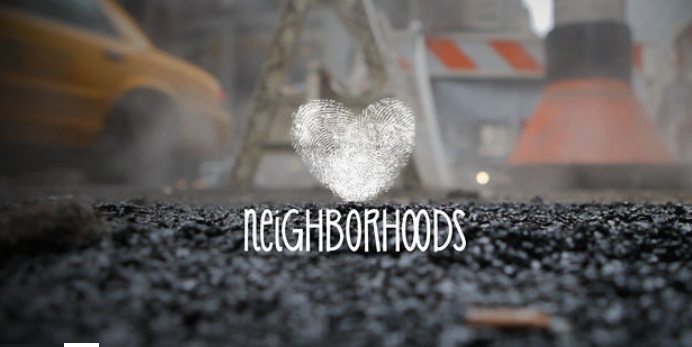
Morgan Burke
There are several factors that probably contribute to what the Atlantic Cities refers to as St. Louis’ “asthma epidemic.” High rates of smoking, for example. And: air pollution.
The number of children suffering from asthma in the St. Louis metropolitan area is nearly three times the national average, according to Asthma Friendly St. Louis, a community program designed to help school-age kids and teens manage respiratory illness. Despite the efforts of several community initiatives, the disease is often poorly managed because of a lack of access to care and educational resources. …
In East St. Louis, which sits across the Mississippi River from St. Louis in Illinois, asthma rates are among the highest in the nation, and experts suspect that this is linked to the high rates of pollution and poverty in the city. 44 percent of East St. Louis residents live on incomes below the federal poverty line.

CDCMissouri asthma hospitalization rates.
The link between pollution and asthma — a terrifying, occasionally deadly inflammation in the lungs — is well-established. But the effects of pollution, particulate soot pollution, may be much broader than previously understood. From the NRDC’s Switchboard blog:
A new study in The Lancet, developed by an international group of experts, finds that outdoor air pollution, especially fine particulate matter (soot) contributes to more than 3.2 million premature deaths around the world each year. …
This new, more refined study also finds that:
- Air pollution ranks among the top ten global health risks associated with mortality and disease.
- Most of the premature deaths due to air pollution are in China and other countries in Asia. In fact, air pollution is the 4th highest risk factor right behind smoking in East Asia.
But outside of Asia, the risks are still high. Globally, outdoor air pollution ranks as the 8th highest risk factor for premature death, posing a greater danger than high cholesterol.
The study was timed, coincidentally or not, to go public as the EPA announced new restrictions on soot pollution, dropping the allowable standard of small particles by 20 percent — a step that could save 15,000 lives a year.
The group Abt Associates also unveiled Air Counts, an online map that allows visitors to assess the effects of soot reductions in various cities around the country. Dropping the amount of particulate matter in New York City by 250 metric tons a year could save 67 lives — and more than half a billion dollars in costs. (In heavily polluted Beijing, a similar drop would have less of an effect, saving only 29 lives.)
St. Louis is not included on Abt’s map, so it’s hard to say the extent to which lives might be saved by the EPA’s new standard. But in a state that sees a higher rate-of-death from asthma than the rest of the country, particularly among African-Americans …
… even one life saved makes the calculus worth it.



